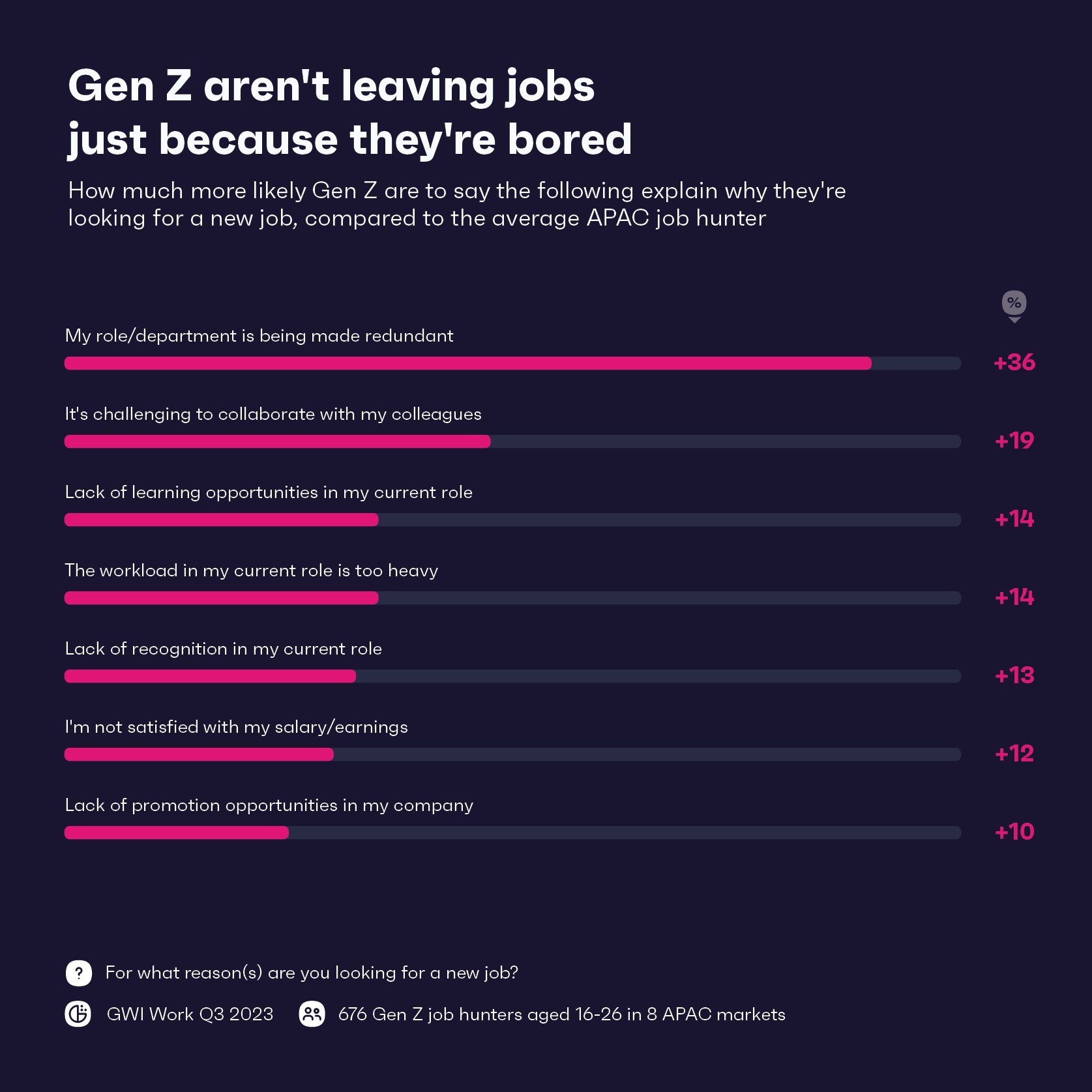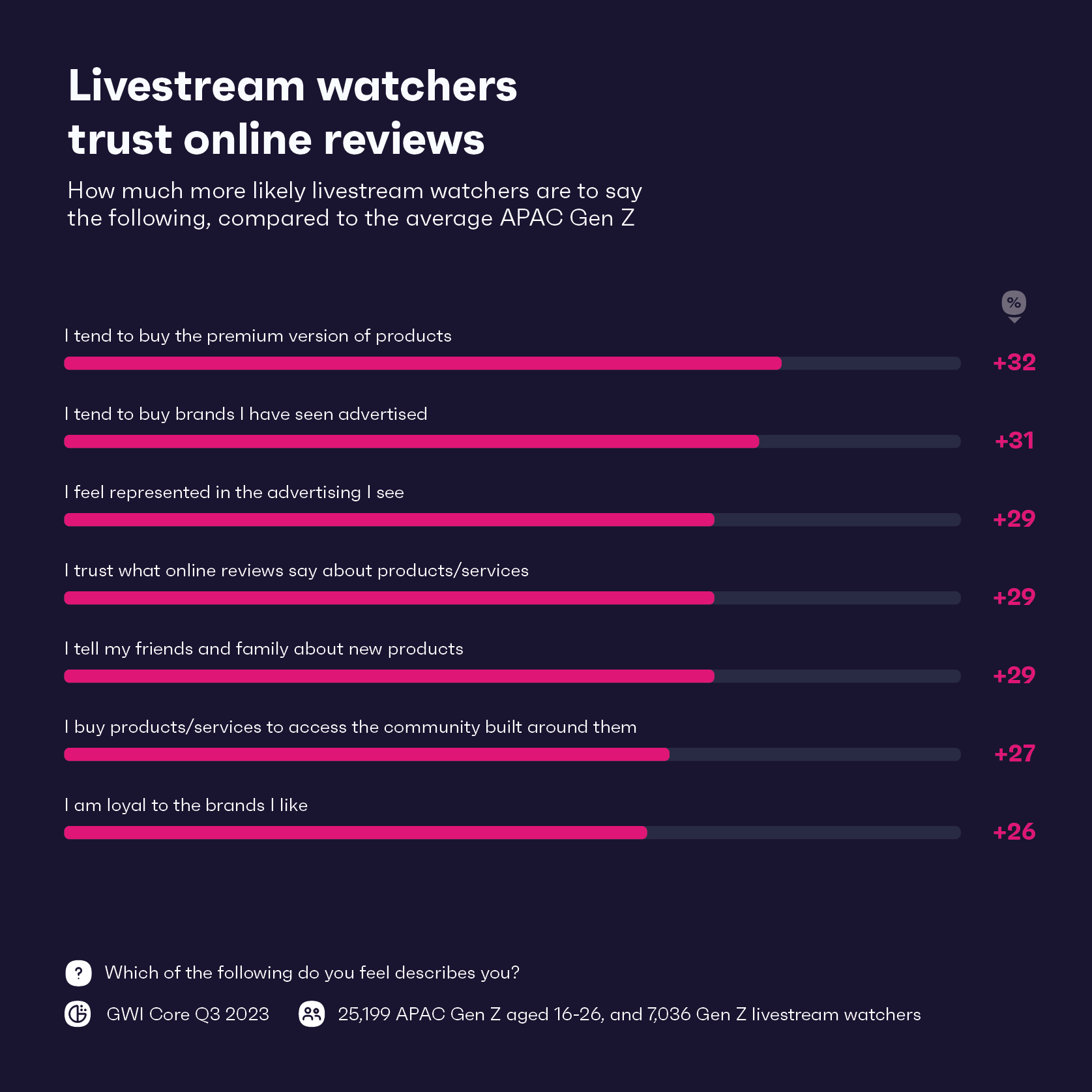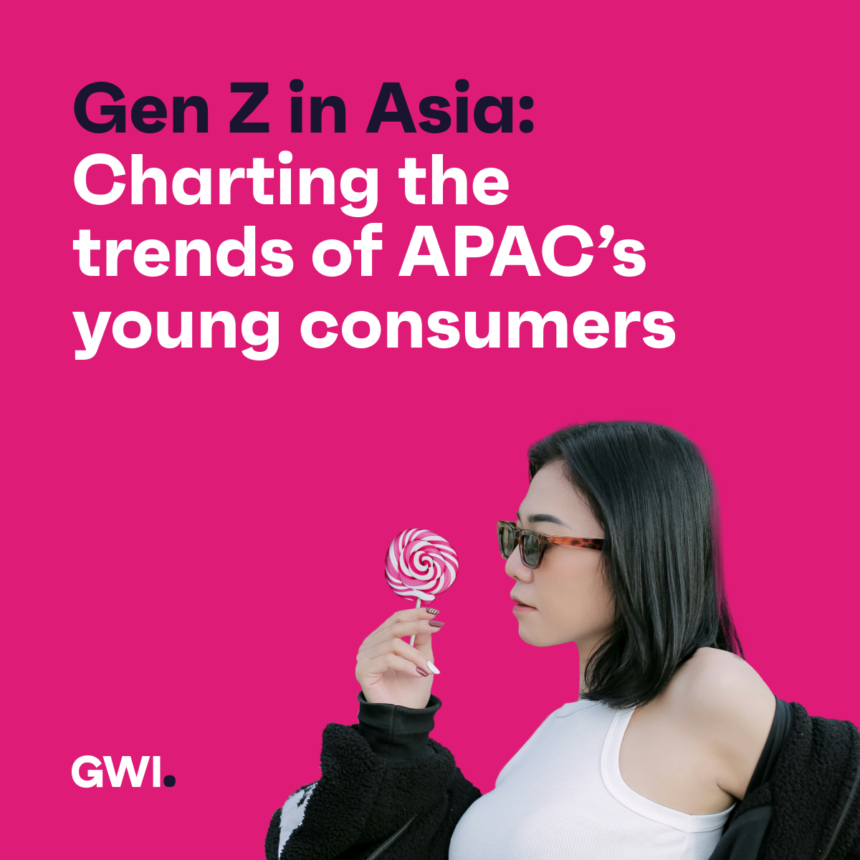Forget everything you thought you knew about Gen Z. While it’s tempting to lump this group together, Gen Z in Asia are a diverse and complicated lot, who are reshaping culture and business as we know it.
From Australia to Singapore, they’re driving new trends and inspiring brands to sit up and pay attention. So leave your Gen Z stereotypes at the door as we take a closer look at who they really are, building on 5 key insights.
Gen Z trends in Asia/APAC:
- Living at home is the new norm
- Gen Z in Asia aren’t lazy; they want learning opportunities
- They’re the most likely to use AI platforms to search
- Gen Z in APAC stand out for watching livestreams
- Many Gen Z don’t feel comfortable talking about mental health
1. Living at home is the new norm
The average Gen Z in APAC is single, a student, without children, and lives with their parents. While the majority fall into these brackets, an increasing number are starting families of their own, working in full-time jobs, and getting married.
We’ve seen a 94% increase in the number of Gen Z in APAC working full-time since Q3 2018.
Their priorities are changing, but in true Gen Z fashion, they’ve found issues with “adulting”. For starters, it’s relatively harder for Gen Z in Asia to move out. 73% of this group in APAC live with their parents – that’s higher than any other region, and significantly higher than the percentage of millennials who say they lived with parents at their age.
While many are interested in getting on the property ladder, perceptions are changing, and there’s less stigma around staying at home. Gen Z even make it look fun, having more freedom to travel and buy luxury treats. It’s part of the reason why Nike’s “going all in on luxury-obsessed Gen Z”, and perhaps they’re right to; there’s been a 25% rise in the number of Gen Z in APAC saying they’ve bought from luxury brands in the last three years.
This shows how diverse this generation is. A fraction of this age group are married with children, while others are enjoying the benefits of living with parents for longer. Brands need to keep tabs on this influential generation as their values and priorities continue to change.
2. Gen Z in Asia aren’t lazy; they want learning opportunities
There’s a common stereotype that Gen Z job-hop more than other generations which, on a basic level, is true.
Over a third of Gen Z business professionals in APAC say they’re likely to search for a new job in the next 6 months, and they’re 13% more likely than average to say they’re very keen to do this. But it isn’t just down to them being bored; there are more factors at play.

A lot of attention seems to be given to Gen Z’s association with “quiet quitting” and “lazy girl jobs”, but this stereotype doesn’t do them justice. Gen Z job hunters in APAC are 36% more likely to say they’re searching for a new job because their role is being made redundant. Beyond this, they find it hard to collaborate with colleagues, and feel there’s a lack of learning opportunities and recognition.
When looking for a new role, Gen Z job hunters in APAC are 50% more likely to say learning opportunities are a priority.
It’s not uncommon for Gen Z workers to join a new role and be given a lot of uninspiring admin tasks. Companies should map out clear progression plans and regularly praise them for good work to keep Gen Z employees engaged and motivated.
They also need to reconsider their recruitment strategy, as many in APAC turn to social media when seeking out new jobs. Gen Z are 23% more likely than average to search for a new job through ads on personal social media platforms, and over a fifth plan on doing this via ads on professional platforms like LinkedIn.
It’s important for brands to look beyond stereotypes and recognize there are many reasons why this younger generation leaves jobs. If brands are looking to recruit Gen Z talent, it’s vital to get on board with the platforms they’re searching on and highlight learning opportunities.
3. They’re the most likely to use AI platforms to search
In APAC, Gen Z are the only generation to rank AI 3rd on the list of search platforms they use most – ahead of voice search, image search, and brand/retail platforms. This says a lot, as among millennials, AI platforms rank 7th.
Compared to the rest of APAC, Gen Z are 49% more likely to use AI platforms to find information.
AI offers a personalized experience to consumers, and customized products or services are something over 1 in 4 Gen Z want from brands. With the emergence of tools like ChatGPT, Claude, and Bard, just to name a few, brands have an opportunity to get creative with how they use AI.
One brand that’s successfully implemented it into their app is Sephora. It has a range of AI tools on its platform, including a virtual assistant that offers rewards and promotions to users. This is very fitting for the region’s Gen Z, as many say they’d consider using an AI chatbot when shopping online for price comparison (54%), support with questions (42%), and budgeting help (36%).
By incorporating this technology, brands are future-proofing their marketing strategy, enhancing the customer experience, and helping to create a more seamless purchase journey.
4. Gen Z in APAC stand out for watching livestreams
Now that life is closer to what we might call “normal”, livestream viewership has slowed down. There’s been an 11% drop in the number of Gen Z in APAC watching live videos since Q3 2021. But that doesn’t necessarily mean it’s in brands’ best interests to take a step back from the medium.
We’ve spoken about growing sports viewership online in our Connecting the dots report, but sports matches aren’t stacking up to livestreams just yet.
More Gen Z in APAC have watched a livestream in the last week than a sports match online (29% vs 24%).
Livestreams have been popular in APAC for some time, and Gen Z in Indonesia are particularly fond of them, with around 2 in 5 having watched one in the last week. We see similar numbers in Malaysia, Vietnam, Hong Kong, and China.
Not only that, but they’re a very effective marketing channel.

Gen Z in APAC who watch livestreams are much more likely to say they trust what online reviews say about products or services, because they’re able to see the product being demonstrated in real-time. This means they’re more likely to become brand ambassadors, loyal to companies they like, and are more receptive to advertising in general.
Essentially, livestreams are a way to reach a very valuable segment of the Gen Z audience in APAC, and allow for authentic product reviews and promotion. And we’ve seen companies like L’Oréal doing a lot for their brand through live commerce.
5. Many Gen Zs don’t feel comfortable talking about mental health
There’s a common stereotype that Gen Z are more prone to mental health issues, which has some truth to it. Gen Z in APAC are 48% more likely to say they have a mental health condition than the regional average.
But another stereotype is that Gen Z are very open and willing to discuss mental health, which is a flawed claim.
29% of Gen Z in APAC feel comfortable talking about it. Even among those with a mental health condition, it’s still only 1 in 3.
There are many reasons why this might be. To list some examples, it could be down to the climate challenge being put on their shoulders at a young age, current global tensions, dealing with the Covid pandemic during school or university, growing up with social media, or even financial milestones like home ownership seeming unachievable.
With this in mind, brands should be careful around mental health messaging, as Gen Z can spot inauthenticity a mile off. In APAC, they want brands to support mental wellbeing by encouraging people to take time off to recover.
In the workplace, businesses should support employees and share mental health resources – whether by working with influencers to share their own experiences, hosting discussions around mental health, or even donating to charities. As long as good intentions are behind these efforts, brands and businesses can also benefit from them in the long-term – building a happier, healthier workforce.
Getting to grips with today’s digital natives
Beneath the surface, Gen Z are far more nuanced than stereotypes portray. As they come of age, this generation is navigating uncharted territory filled with opportunity and uncertainty.
They’ll need support as they do this, and will build strong relationships with the brands that truly understand them and their needs.









